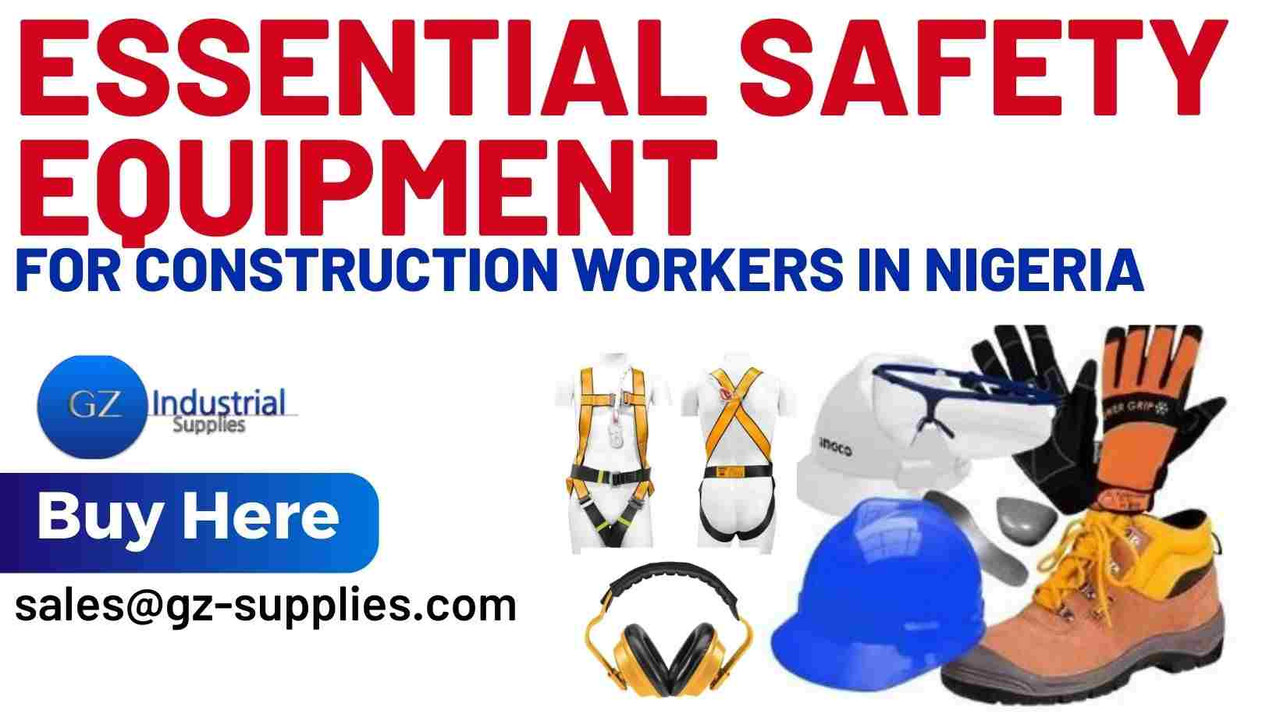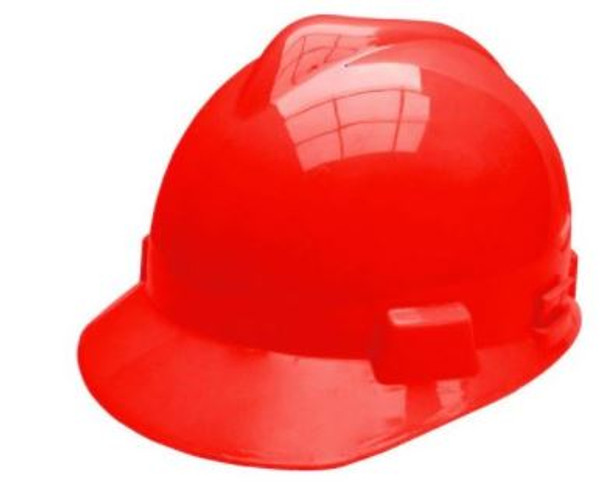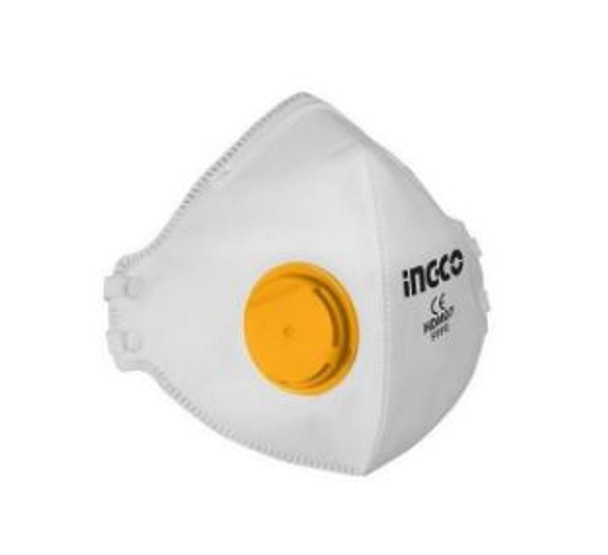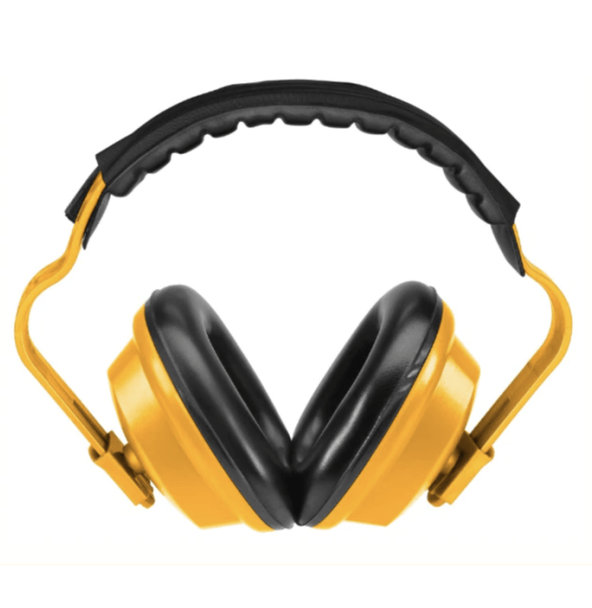Essential Safety Equipment for Construction Workers in Nigeria
Safety equipment are indispensable in the construction industry, serving as the protective shield for the dedicated workers who craft our infrastructure and buildings. It is not merely a set of tools and gear; it is the assurance of life and well-being in an environment teeming with hazards. Construction sites are dynamic, fast-paced, and often fraught with risks, from falling debris to exposure to harmful substances. Safety equipment, such as hard hats, safety goggles, harnesses, and respiratory protection, acts as the first line of defense against these perils. It shields construction workers from head injuries, eye damage, falls from heights, respiratory issues, and more. Beyond the physical safeguards, it instills confidence and peace of mind, enabling workers to focus on their tasks and contribute effectively to the construction process. In essence, safety equipment is not an accessory; it is a lifeline that ensures that our builders return home safe and sound, bridging the gap between ambition and security in the construction industry.
Buy Online... INGCO Safety Helmet HSH10
Construction workers rely on an array of safety equipment to protect themselves from the myriad of hazards they encounter daily. Helmets are paramount, safeguarding the head from falling objects and head injuries. Safety goggles shield the eyes from dust, debris, and hazardous chemicals, ensuring clear vision. Harnesses and lifelines are crucial for fall protection, preventing accidents when working at heights. Respiratory protection equipment, including masks and respirators, guards against inhaling harmful dust, fumes, or pollutants. Protective gloves and safety boots are essential for shielding hands and feet from potential injuries, while high-visibility clothing enhances visibility on busy construction sites, reducing the risk of accidents. Hearing protection, such as earplugs or earmuffs, guards against deafening noise levels, preventing hearing damage. Together, these safety equipment items create a comprehensive armor for construction workers, enabling them to navigate their demanding work environment with greater confidence and security.
We'll journey together through the Nigerian construction industry, where we'll uncover the essential safety equipment you need to stay safe and sound. From rugged helmets and protective eyewear to trusty harnesses and life-saving respiratory protection, we'll explore the tools and gear that form your safety net. Get ready to discover not only the essential equipment but also the regulations and best practices tailored to the Nigerian construction.
Recommended Safety Equipment for Construction Workers in Nigeria
1. Head Protection:
One of the most essential safety equipment for construction workers is a helmet. A helmet protects the head from falling objects, flying debris, electric shocks, and other hazards that can cause serious injuries or even death. According to the World Health Organization, head injuries are among the leading causes of disability and mortality in Nigeria.
There are different types of helmets available for construction workers, depending on the level of protection and comfort they need. Some of the common types are:
Hard hats:
These are the most widely used helmets in construction sites. They are made of rigid plastic or fiberglass and have a suspension system that absorbs the impact of a blow. They also have a brim that shields the eyes and face from sun, rain, and dust. Hard hats are classified into three types according to the electrical protection they provide: Type I (top impact), Type II (top and lateral impact), and Type III (high voltage).
Safety helmets:
These are similar to hard hats, but they have a chin strap that secures the helmet to the head. They are more suitable for workers who need to move around a lot or work at heights, as they prevent the helmet from falling off. Safety helmets also have vents that allow air circulation and reduce heat stress.
Bump caps:
These are lightweight helmets that protect the head from minor bumps and scrapes. They are not designed to withstand heavy impacts or electrical hazards. They are ideal for workers who work in confined spaces or low-ceiling areas, where hard hats or safety helmets may be impractical or uncomfortable.
Buy Online... Safety Goggle HSG02 INGCO
2. Eye and Face Protection
The eyes and face are among the most vulnerable parts of the body when it comes to construction work. They can be exposed to various hazards, such as dust, sparks, splashes, flying particles, UV rays, and chemical vapors, that can cause irritation, infection, inflammation, or permanent damage. According to a study by the Nigerian Institute of Medical Research, eye injuries account for 21.5% of all occupational injuries in Nigeria. Therefore, it is vital for construction workers to wear appropriate protective eyewear that can shield their eyes and face from potential harm.
There are different types of eye and face protection equipment available for construction workers, depending on the nature and level of risk they face. Some of the common types are:
Safety glasses:
These are similar to regular glasses, but they have impact-resistant lenses and side shields that protect the eyes from flying objects and debris. They are suitable for general-purpose protection, such as when using hand tools or power tools. Safety glasses should comply with the ISO 19734:2021 standard for eye and face protection.
Safety goggles:
These are more snug-fitting than safety glasses, and they cover the entire eye area, forming a seal around the eyes. They provide better protection against liquids, vapors, and mists, as well as dust and small particles. They can be either vented or non-vented, depending on the level of ventilation and protection needed. Safety goggles should also comply with the ISO 19734:2021 standard.
Face shields:
These are transparent visors that cover the entire face, from the forehead to the chin. They provide the most protection to the face and eyes, especially when dealing with large or hot particles, molten metal, or corrosive chemicals. They should be worn over safety glasses or goggles, as they do not provide adequate protection by themselves. Face shields should comply with the OSHA 1915.153 standard for eye and face protection.
Buy Online... Ingco Safety Harness Full Body Protection Kit 50mm HSH501502
3. Fall Protection:
Harnesses and Lifelines
Falls are one of the most common and fatal hazards in construction work. According to the International Labor Organization, falls account for 37% of all occupational fatalities in Nigeria. Therefore, it is crucial for construction workers to use appropriate fall protection equipment, such as harnesses and lifelines, when working at heights or near edges. Harnesses and lifelines are designed to prevent falls or arrest falls safely, minimizing the risk of injury or death.
There are different types of harnesses and lifelines available for construction workers, depending on the nature and level of risk they face. Some of the common types are:
Full-body harnesses:
These are the most widely used fall protection equipment in construction sites. They are secured around the worker’s shoulders, chest, waist, and thighs, and have a D-ring at the back or front that connects to a lifeline or an anchor point. They distribute the force of a fall evenly across the body and keep the worker in an upright position. Full-body harnesses are classified into five classes according to the type of work and the attachment point: Class A (general purpose), Class B (controlled descent), Class C (chest), Class D (suspension), and Class E (confined space).
Self-retracting lifelines:
These are devices that consist of a retractable cable or webbing that connects the harness to an anchor point. They allow the worker to move freely within a certain range, and automatically lock and stop the worker from falling in the event of a sudden movement or loss of balance. Self-retracting lifelines are suitable for workers who need to work at varying heights or distances from the anchor point.
Shock-absorbing lanyards:
These are flexible cords that connect the harness to an anchor point. They have a shock absorber that reduces the impact force of a fall by stretching and dissipating the energy. Shock-absorbing lanyards are suitable for workers who need to work at a fixed height or distance from the anchor point, and have a clear fall space below them.
Buy Online... INGCO Dust Mask HDM07
4. Respiratory Protection
The air quality on construction sites can be affected by various factors, such as dust, smoke, fumes, gases, vapors, and biological agents. These contaminants can pose serious health risks to construction workers, such as respiratory infections, asthma, chronic obstructive pulmonary disease, lung cancer, and silicosis. Therefore, it is important for construction workers to wear appropriate respiratory protection equipment that can filter out harmful particles and provide clean air to breathe.
There are different types of respiratory protection equipment available for construction workers, depending on the nature and level of risk they face. Some of the common types are:
Disposable respirators:
These are single-use masks that cover the nose and mouth and have a metal strip that adjusts to the shape of the nose. They are suitable for low-risk tasks, such as sweeping, sanding, or drilling. They can filter out dust, pollen, mold, and other non-oil based particles. Disposable respirators should comply with the NIOSH N95 standard for particulate filtering.
Reusable respirators:
These are masks that can be used more than once and have replaceable cartridges or filters that attach to the mask. They are suitable for high-risk tasks, such as welding, cutting, or spraying. They can filter out dust, smoke, fumes, gases, vapors, and other oil and non-oil based particles. Reusable respirators should comply with the ISO 19734:2021 standard for eye and face protection.
Powered air-purifying respirators (PAPRs):
These are devices that consist of a battery-powered blower, a hood or helmet, and a hose that connects to a filter or cartridge. They provide positive pressure to the face and supply clean air from the filter or cartridge. They are suitable for very high-risk tasks, such as working with asbestos, lead, or radioactive materials. They can filter out dust, smoke, fumes, gases, vapors, and other oil and non-oil based particles. PAPRs should comply with the OSHA 1910.134 standard for respiratory protection.
INGCO HGCG01-XL Cut Resistance Gloves
5.Hand and Foot Protection
The hands and feet are among the most exposed and used parts of the body when it comes to construction work. They can be subjected to various hazards, such as cuts, punctures, abrasions, burns, electric shocks, and crush injuries. Therefore, it is important for construction workers to wear appropriate hand and foot protection equipment, such as gloves and safety boots, that can shield their extremities from potential harm.
There are different types of gloves and safety boots available for construction workers, depending on the nature and level of risk they face. Some of the common types are:
1. Gloves
Gloves are protective covering for the hands that can prevent or reduce injuries from mechanical, chemical, thermal, or biological agents. They are made of different materials, such as leather, rubber, cotton, or synthetic fibers, and have different features, such as grip, dexterity, or insulation. Some of the common types of gloves for construction workers are:
Leather gloves:
These are durable and versatile gloves that can protect the hands from abrasions, cuts, and sparks. They are suitable for general-purpose tasks, such as handling tools, materials, or equipment..
Rubber gloves:
These are flexible and waterproof gloves that can protect the hands from liquids, chemicals, or electric currents. They are suitable for tasks that involve wet or corrosive substances, such as cement, paint, or solvents.
Cotton gloves:
These are lightweight and breathable gloves that can protect the hands from dust, dirt, or minor irritations. They are suitable for tasks that require a high level of hygiene, such as cleaning, painting, or plastering.
2. Safety Boots
Safety boots are protective footwear that can prevent or reduce injuries from falling objects, sharp edges, hot surfaces, or slippery floors. They are made of different materials, such as leather, rubber, or steel, and have different features, such as toe caps, midsoles, or outsoles. Some of the common types of safety boots for construction workers are:
Steel toe boots:
These are sturdy and durable boots that have a steel cap in the toe area that can protect the feet from heavy or sharp objects. They are suitable for tasks that involve a high risk of impact or compression, such as demolition, excavation, or carpentry.
Rubber boots:
These are waterproof and slip-resistant boots that have a rubber sole and upper that can protect the feet from liquids, chemicals, or electric currents. They are suitable for tasks that involve wet or corrosive substances, such as cement, paint, or solvents.
Leather boots:
These are comfortable and breathable boots that have a leather upper and a rubber or polyurethane sole that can protect the feet from abrasions, cuts, and sparks. They are suitable for general-purpose tasks, such as handling tools, materials, or equipment.
Buy Online... Ingco Ear Muff HEM01
6. Hearing Protection
The noise level on construction sites can be very high, due to the use of machinery, tools, vehicles, and explosives. Exposure to loud noise can cause temporary or permanent hearing loss, tinnitus, stress, fatigue, and reduced productivity. According to the World Health Organization, noise-induced hearing loss is one of the most common occupational diseases in the world, affecting about 16% of the global population. Therefore, it is important for construction workers to wear appropriate hearing protection devices that can reduce the noise level and protect their hearing health.
There are different types of hearing protection devices available for construction workers, depending on the nature and level of noise they face. Some of the common types are:
Earplugs:
These are small devices that fit inside the ear canal and block out noise. They are suitable for low to moderate noise levels, such as when using hand tools or power tools. They are also comfortable and easy to use, but they may not fit well or provide enough protection for some workers.
Earmuffs:
These are devices that fit over the ears and have a headband that connects them. They cover the entire ear and seal out noise. They are suitable for moderate to high noise levels, such as when using heavy machinery or explosives. They are also more visible and durable than earplugs, but they may be bulky and hot to wear.
Electronic hearing protectors:
These are devices that combine earplugs or earmuffs with a microphone and a speaker. They amplify low-level sounds, such as speech or warning signals, and attenuate high-level sounds, such as noise or impact. They are suitable for variable noise levels, such as when working in a noisy environment with intermittent quiet periods. They are also more sophisticated and adaptable than earplugs or earmuffs, but they may be expensive and require batteries.
Buy Online... Harness Fall Protection Equipment Karam
7. High-Visibility Clothing
Visibility is a key factor for safety on construction sites, where workers may be exposed to various hazards, such as moving vehicles, machinery, or equipment. Low visibility can increase the risk of accidents and injuries, especially in dark, foggy, or rainy conditions. Therefore, it is important for construction workers to wear appropriate high-visibility clothing that can make them stand out and be seen by others.
High-visibility clothing is protective apparel that has bright colors, such as orange, yellow, or lime, and reflective materials, such as tapes, strips, or bands, that enhance the contrast between the wearer and the background. High-visibility clothing can be classified into three types according to the level of visibility they provide:
Type O:
These are garments that provide the minimum level of visibility and are suitable for off-road or low-risk environments, such as parking lots, warehouses, or delivery services. They have one or two bands of reflective material around the torso and may have additional bands on the sleeves or shoulders.
Type R:
These are garments that provide an intermediate level of visibility and are suitable for road or medium-risk environments, such as highways, railways, or airports. They have two bands of reflective material around the torso and one band over each shoulder, forming an X shape on the back. They may also have additional bands on the sleeves, legs, or headwear.
Type P:
These are garments that provide the highest level of visibility and are suitable for public safety or high-risk environments, such as emergency services, law enforcement, or firefighting. They have two bands of reflective material around the torso and one band over each shoulder, forming an X shape on the back. They also have additional bands on the sleeves, legs, or headwear, forming a broken or solid pattern.
Buy Online... Safety Boot SSH02S1P 45 INGCO
Where to Buy Safety Equipment in Nigeria
If you are looking for quality and reliable safety equipment for your construction work, you may want to consider buying from gz industrial supplies and Tikweld products and services, two of the leading suppliers and stores of industrial materials and welding equipment in Nigeria. Here are some of the reasons why you should choose them for your safety equipment needs:
Gz Industrial Supplies:
This is one of Nigeria’s first online industrial stores, offering a wide range of products, such as workwear, PPE, safety boots, gloves, first aid kits, safety signs, fire extinguishers, medical supplies and more. They have physical stores in Abuja, Lagos, Rivers, Cross river and an online store that delivers nationwide. They also provide after-sales support and maintenance services for their products. You can visit their website here or call them at +234 9055793558 or WhatsApp +2348181069339 (24hours).
Tikweld Products and Services:
This is one of the top suppliers of welding and industrial materials and welding services in Nigeria, offering solutions such as gas detection, fire protection, safety identification, and respiratory protection. They have partnered with leading manufacturers of welding and industrial equipment, such as Maxmech, Esab, and Miller, to provide the best quality and innovation to their customers. They have physical stores in Port Harcourt, Lagos, and Abuja, and an online store that delivers nationwide. They also provide technical support and training services for their products. You can visit their website here or call them at +234 7067474994 or (Whatsapp Messages) + 234 8071993874
When buying safety equipment from any suppliers, you should follow some tips to ensure that you get the best value and quality for your money. Some of these tips are:
- Do some research on the supplier or store before buying. Check their reputation, reviews, ratings, and credentials. Make sure they are licensed, certified, and authorized to sell safety equipment in Nigeria. Avoid buying from unknown or dubious sources that may sell counterfeit or substandard products.
- Compare the prices and features of different products and brands. Look for products that meet the relevant standards and specifications for safety equipment, such as ISO, EN, ANSI, or OSHA. Choose products that suit your needs, preferences, and budget. Do not compromise on quality or safety for the sake of saving money.
- Ask for a warranty, guarantee, or return policy for the products you buy. Make sure you understand the terms and conditions of the warranty, guarantee, or return policy, and keep the receipts and documents as proof of purchase. If you encounter any problems or defects with the products, contact the supplier or store immediately and request for a repair, replacement, or refund.
Buy Online... INGCO Industrial Safety Goggles, HSG05
Conclusion
Safety equipment is a vital component of construction work, as it can protect workers from various hazards and prevent injuries and illnesses. Construction workers should wear appropriate safety equipment that suits their needs, preferences, and budget, and that meets the relevant standards and specifications for safety equipment. Construction workers should also maintain and inspect their safety equipment regularly, to ensure that it is in good condition and functioning properly. By following these tips and best practices, construction workers can ensure their safety and health, as well as the quality and efficiency of their work. Safety equipment is not only a legal requirement, but also a moral obligation, for construction workers and companies. Safety equipment can save lives, reduce costs, and improve productivity. Therefore, construction workers and companies should prioritize safety and invest in safety equipment, as it is a worthwhile and rewarding endeavor. To enable us Get You the best safety equipment for yourself and your workers, Contact Us Today.















